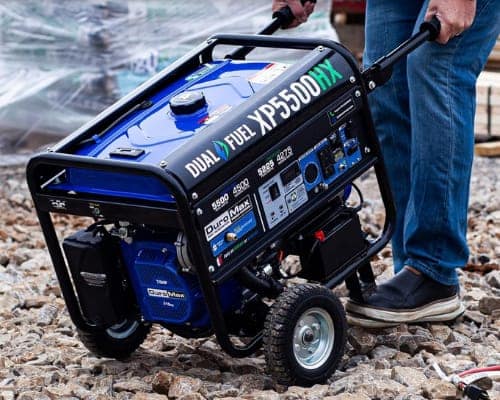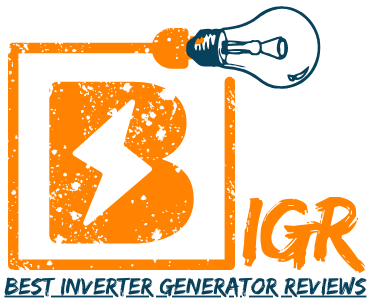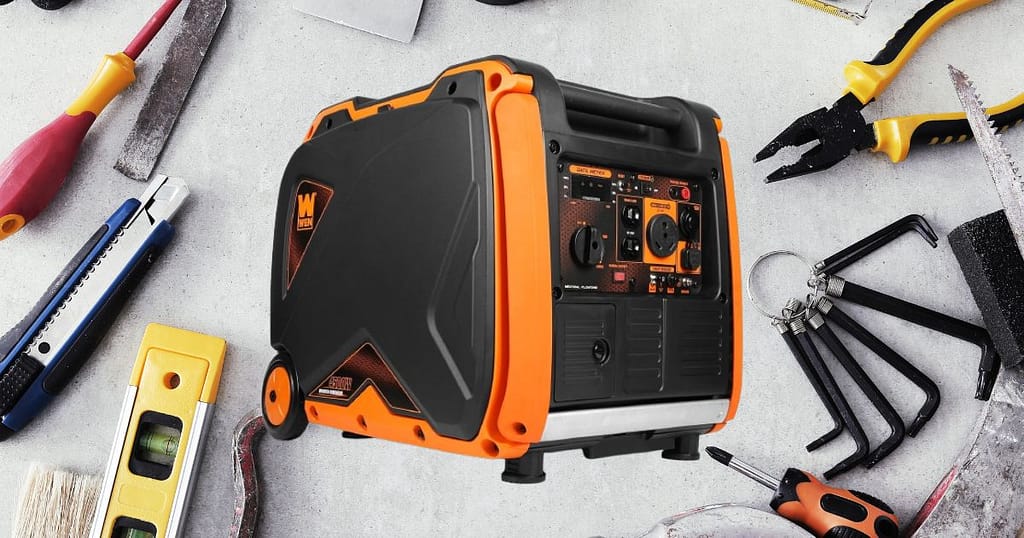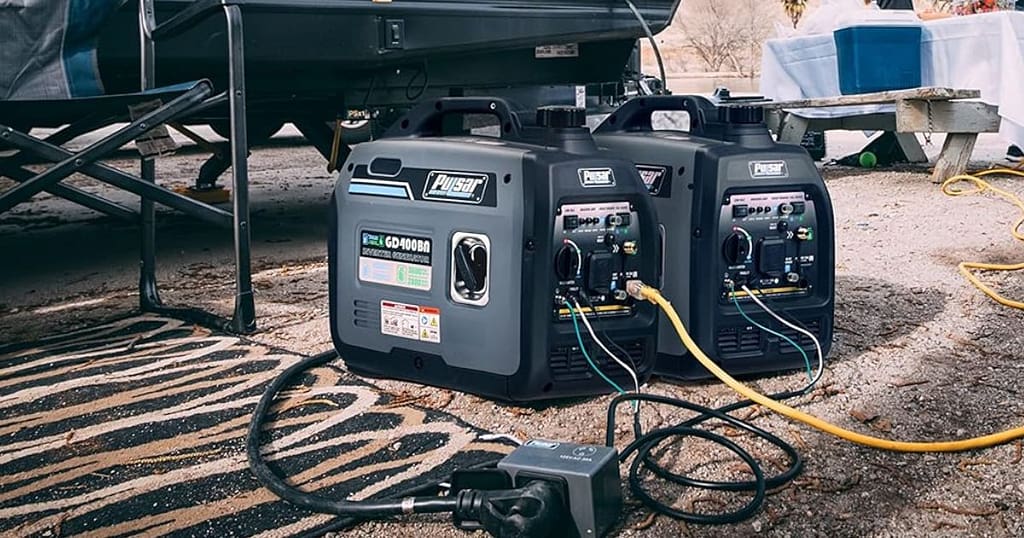
Can a 5000-Watt Generator power a 5HP Motor?
Understanding the Basics
1. Starting vs. Running Watts: Motors, especially during startup, demand a higher wattage known as starting watts. Verify that the generator’s starting wattage accommodates the motor’s surge requirements.
2. Continuous Running Wattage: Ensure the generator’s running wattage meets or exceeds the motor’s continuous running wattage. This ensures sustained operation without overloading the generator.
3. Power Factor Consideration: Motors often have a power factor lower than 1. Account for this when evaluating generator capacity, as the power factor influences the effective power delivered to the motor.
Digging Deeper
4. Voltage and Frequency Alignment: Confirm that the generator supplies the correct voltage and frequency needed by the motor. Mismatched values can lead to inefficiencies, potential damage, or compromised performance.
5. Manufacturer Recommendations: Consult the manuals provided by both the generator and motor manufacturers. They contain valuable insights into compatibility, power requirements, and any specific guidelines for optimal performance.
Practical Tips
6. Load Management: If the generator will concurrently power additional loads, factor in their combined wattage. This ensures a holistic understanding of the generator’s capability under various operating conditions.
7. Accounting for Surge: Motors, especially those with high starting surges, might require a generator with a higher surge or starting watts capacity. This prevents issues during motor startup and guarantees stable operation.
While a 5000-watt generator can theoretically run a 5HP motor, the devil is in the details. Delve into the specifics of starting and running watts, power factor, and manufacturer guidelines to ensure a harmonious relationship between your generator and motor. By understanding these critical factors, you empower yourself to make informed decisions, ensuring both efficiency and longevity in your power setup.
How to make a 5000-watt generator quieter?
To make a 5000-watt generator quieter, consider the following:
1. Enclosure or Encasement: Build or purchase an enclosure to contain the generator. This helps in dampening the noise produced.
2. Use a Silencer or Muffler: Install a high-quality silencer or muffler designed for generators. This can significantly reduce the exhaust noise.
3. Anti-Vibration Pads: Place anti-vibration pads under the generator to minimize the noise transmitted through vibrations.
4. Distance: Position the generator as far away as possible from living spaces. The farther it is, the less noticeable the noise.
5. Baffle the Exhaust: Construct a baffle around the exhaust system to redirect and absorb noise.
6. Install a Sound Deflector: Use a sound deflector to direct noise away from sensitive areas, like neighboring properties.
7. Choose a Quieter Generator Model: When purchasing a generator, look for models specifically designed for low noise output. Inverter generators tend to be quieter than traditional ones.
8. Regular Maintenance: Keep the generator well-maintained. Clean or replace air filters and mufflers as per the manufacturer’s recommendations.
9. Noise Reduction Blankets: Use noise reduction blankets designed for generators. These are acoustic barriers that can help absorb and reduce noise.
10. Throttle Down During Low Demand: If possible, run the generator at lower power levels during times of low demand to reduce noise.
Remember to follow safety guidelines and consult the generator’s manual for any specific recommendations regarding noise reduction.
Can 5000 watt generator run a sump pump?
Yes, a 5000-watt generator can typically run a sump pump. However, it’s crucial to consider the power requirements of the sump pump and any additional devices you plan to power simultaneously.
Here are some key considerations:
1. Power Rating of the Sump Pump: Check the wattage or amperage requirements of your sump pump. Ensure that the running wattage of the sump pump falls within the continuous running capacity of the 5000-watt generator.
2. Starting Surge: Sump pumps may have a higher starting (surge) wattage compared to their continuous running wattage. Confirm that the generator can handle this initial surge without overloading.
3. Additional Loads: If you plan to power other devices along with the sump pump, calculate the combined wattage to ensure it doesn’t exceed the generator’s total capacity.
4. Generator Type: Inverter generators are generally more suitable for sensitive electronic equipment, but traditional generators can also work well for sump pumps.
Always refer to the manufacturer’s specifications for both the sump pump and the generator to ensure compatibility. Additionally, regularly maintain your generator to ensure reliable performance when needed, especially during critical situations such as flooding where a sump pump is essential.
How many air conditioners can a 5000 watt generator run?
The ability of a 5000-watt generator to power air conditioners depends on several factors, and it’s crucial to delve into specific details for a comprehensive understanding:
1. Air Conditioner Size and Wattage: The power consumption of air conditioners varies based on their size and cooling capacity. Small window units typically range from 500 to 1500 watts, while larger central air conditioning systems can consume 2000 watts or more.
2. Starting Surge: Understanding the starting surge of an air conditioner is crucial for selecting an appropriately sized generator, as it needs to handle the temporary increase in power demand when the compressor starts up. Always refer to the air conditioner’s specifications for accurate running and starting wattage information.
3. Total Generator Capacity: A 5000-watt generator has a continuous running capacity, and it’s essential to ensure this is sufficient for the running wattage of the air conditioner(s) you intend to power. Additionally, consider the generator’s surge or starting wattage capacity to handle the initial power requirements during startup.
4. Simultaneous Load: If you plan to run multiple air conditioners simultaneously, calculate the total combined wattage to ensure it doesn’t exceed the generator’s capacity. Include other appliances or devices that might be running concurrently.
5. Type of Generator: Inverter generators are often preferred for powering sensitive electronics, including air conditioners, due to their stable power output. Consider the type of generator and its compatibility with electronic devices.
6. Efficiency of Appliances: Energy-efficient air conditioners will draw less power, allowing you to run more units on a 5000-watt generator compared to less efficient models.
7. Additional Loads: Take into account other devices or appliances that might be connected to the generator simultaneously. These can include lights, refrigerators, or electronics, and their combined wattage affects the available power for air conditioners.
While a 5000-watt generator can power air conditioners, the number of units it can effectively run depends on factors such as their wattage, starting surge, the total generator capacity, and the presence of other connected loads. Always refer to the specific wattage requirements of your appliances and the generator’s specifications for accurate compatibility assessments.
Can a 5000 watt generator power my whole house?
The ability of a 5000-watt generator to power your entire house depends on your home’s energy needs. It may be sufficient for essential appliances and lighting but might fall short for larger homes with high energy demand. Assess your specific household wattage requirements and prioritize essential appliances during power outages.
My verdict
In this blog, I tried to answers some common questions that asked by people. Each of these answers consists of deep and well researched knowledge. First I spent my time to collect questions after then I gained answers from experts people and took opinion from them. The goal of this article is to help my audience who have a 5000 watt generator. Also, I’ll try to collect information about different watts generators. I request to you people that please support me and share this article on your social media channels.




